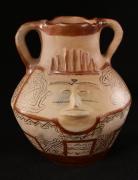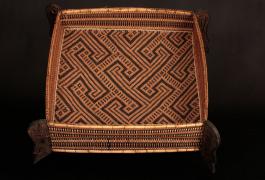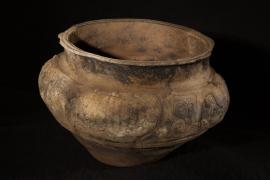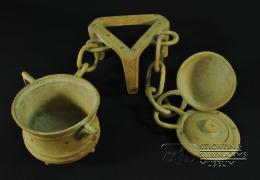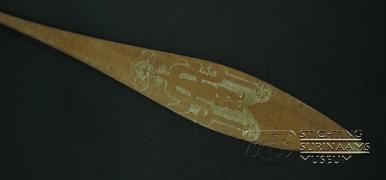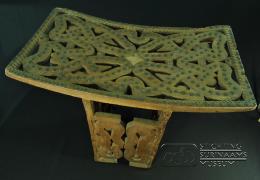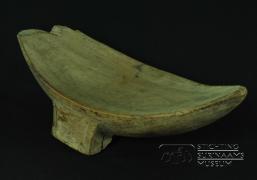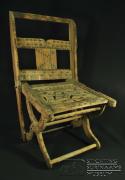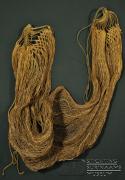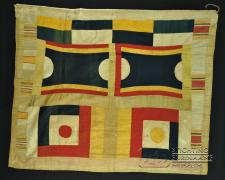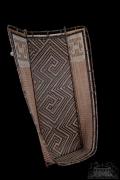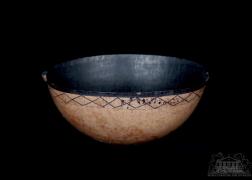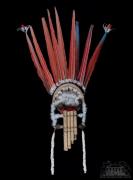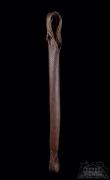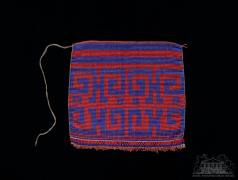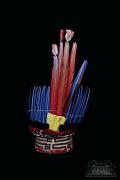Linked Heritage
Through this exhibition, you'll be shown a panel of objects from populations of the Guiana shield: Amerindians and Maroons. Basketworks and ceramics covered with patterns, benches, hammocks, musical instruments, everyday items, archaeological finds: from former productions to recent ones, all of them show us many common points between these populations, in terms of technics and materials.
French Guiana, Brazil and Surinam, all three shelter Amerindian and Maroon populations that were brought to move across the territory regarding historical circumstances
Objects produced, whether from archaeological discoveries or ethnographic collects, are the result of know-how transmissions such as basketwork's braiding technics, weaving, woodcarving, clay modelling. Cultural interactions between these populations also impacted on the production of such objects through activities of trade, barter for example, to seal an agreement or for some celebrations. Therefore, there is nothing surprising to encounter similar items in both groups: as an example, "prese cassava" (or tipiti) is a traditional Amerindian item made of vegetal fiber (MPEG 7561) also used by Maroons. This common element of the Guiana shield heritage intervene in the preparation of meals and permits the extraction of cassava pasta.
Generally speaking, Amerindians and Maroons have been able to take advantage of the environment in which they live in: through objects made of natural materials such as wood (SSM H-0237), cotton (MCG 91.8.231), clay (MCG 91.5.57), calabash (MPEG 13761), or even feather (MPEG N01\2009).
Amerindian basketworks often decorated with patterns (MPEG 13793), or even outfits (MPEG 13986) and textiles (MCG 91.8.219 ; 91.8.231 ; SSM T-0027), feather-adorned headdress (MPEG N01\2009), represent strong identity markers. As for Bushinenge, they excel at woodworking (SSM H-0483). Sculpted ornaments are a characteristic that can be noticed on some Saramaka objects (SSM H-0136), whereas other craftsman add painted decorations in order to affirm ones belonging to a specific group as it is the case for Ndyka for example (MCG 90.8.89).

